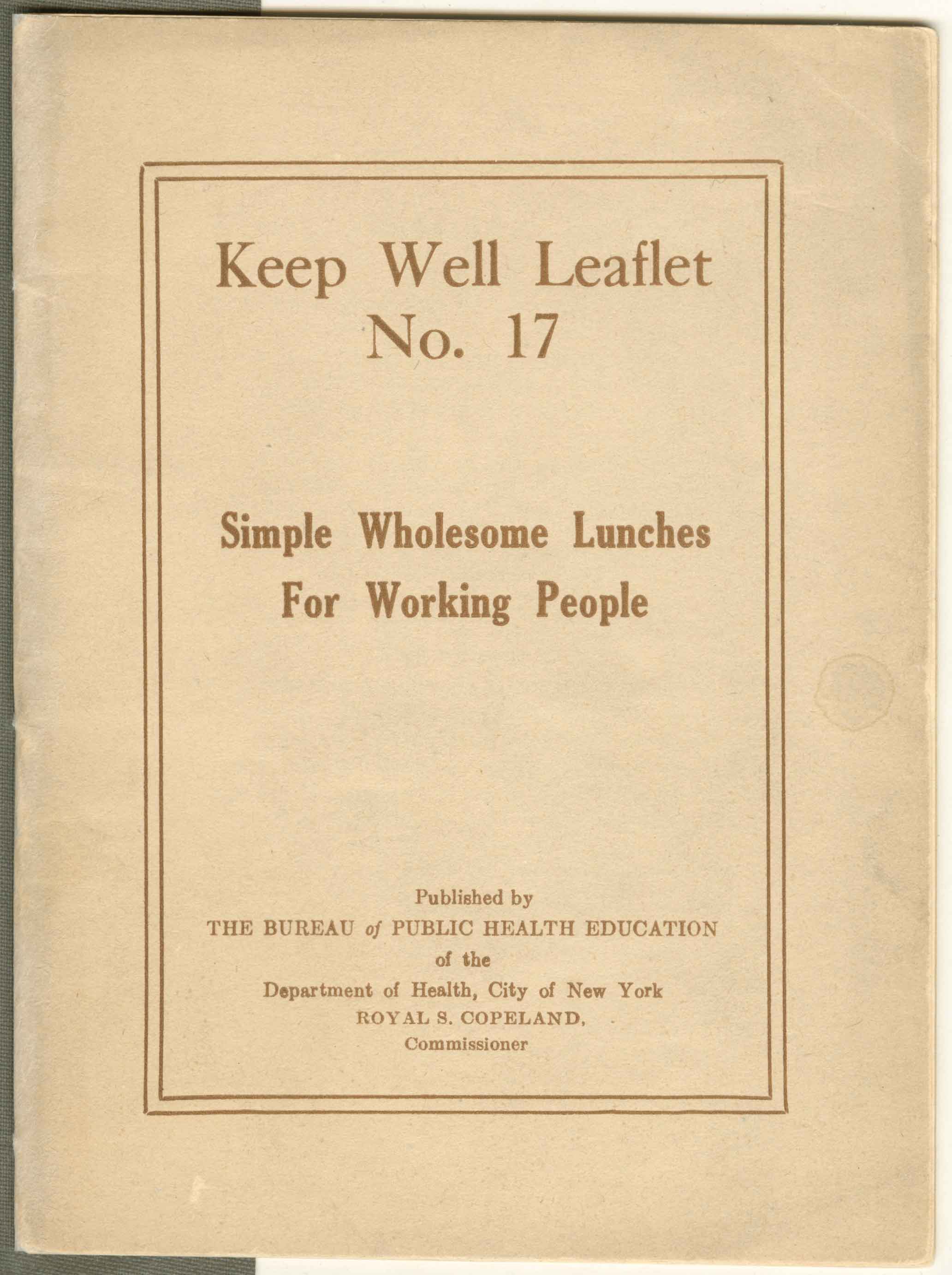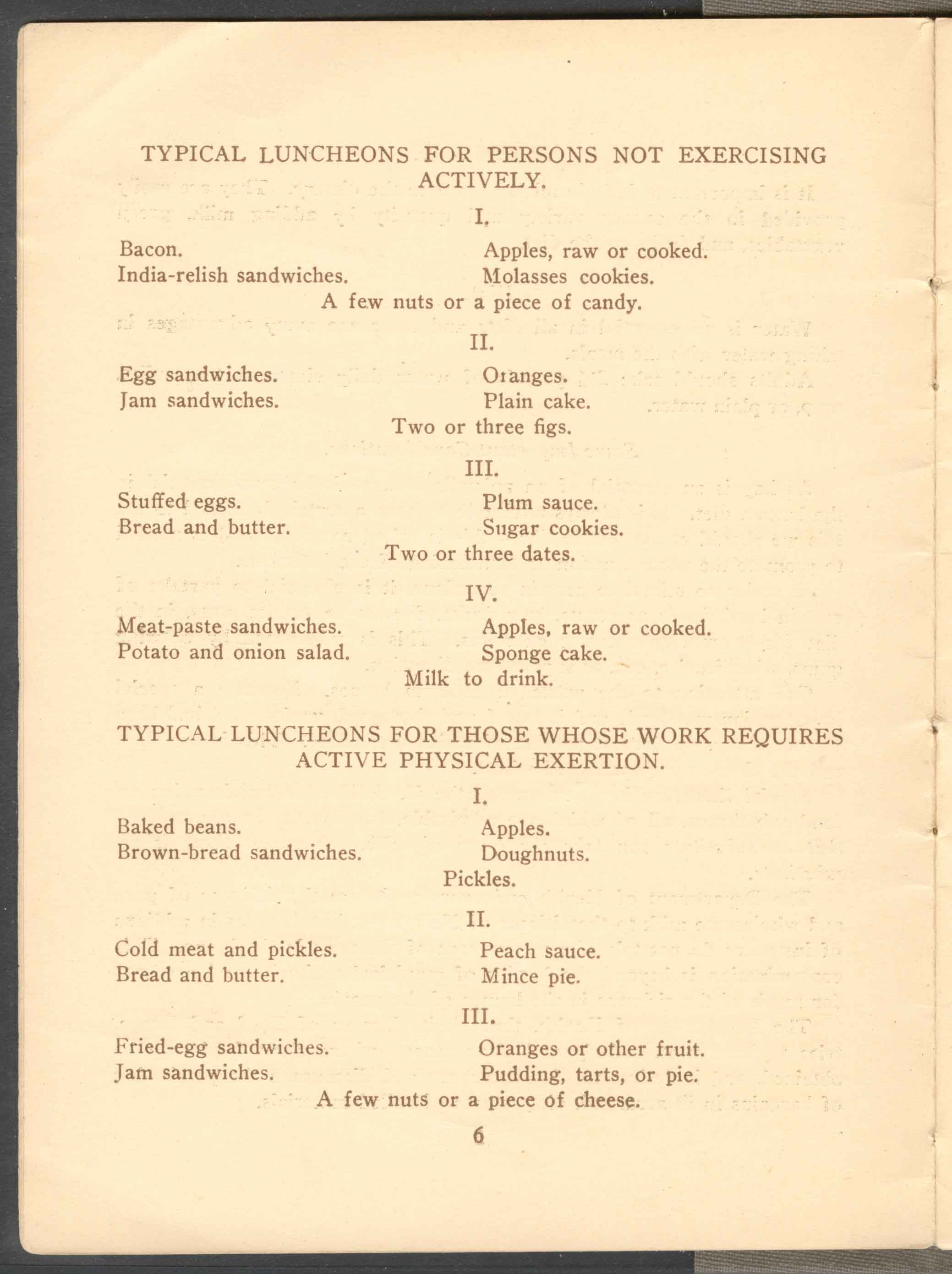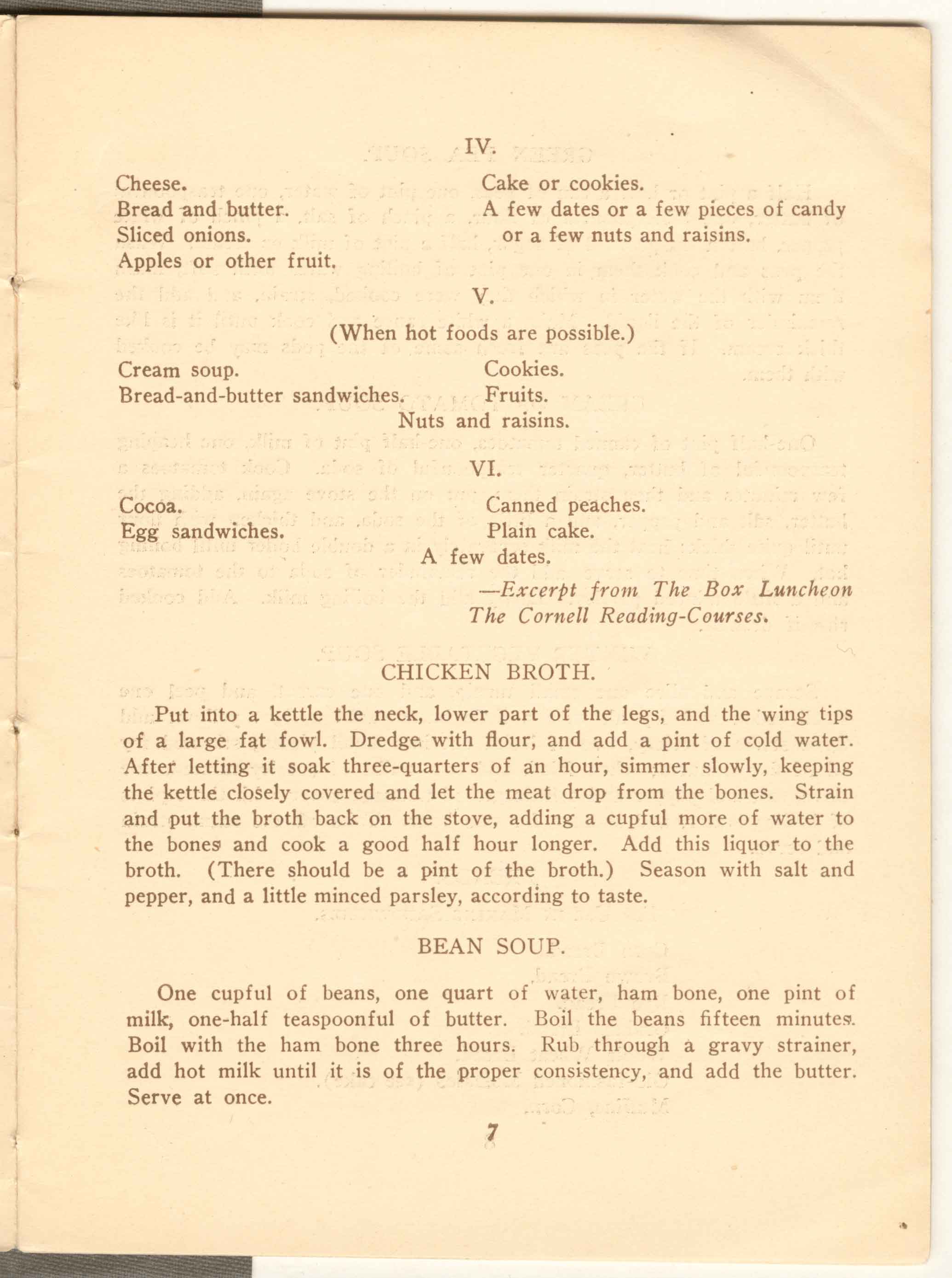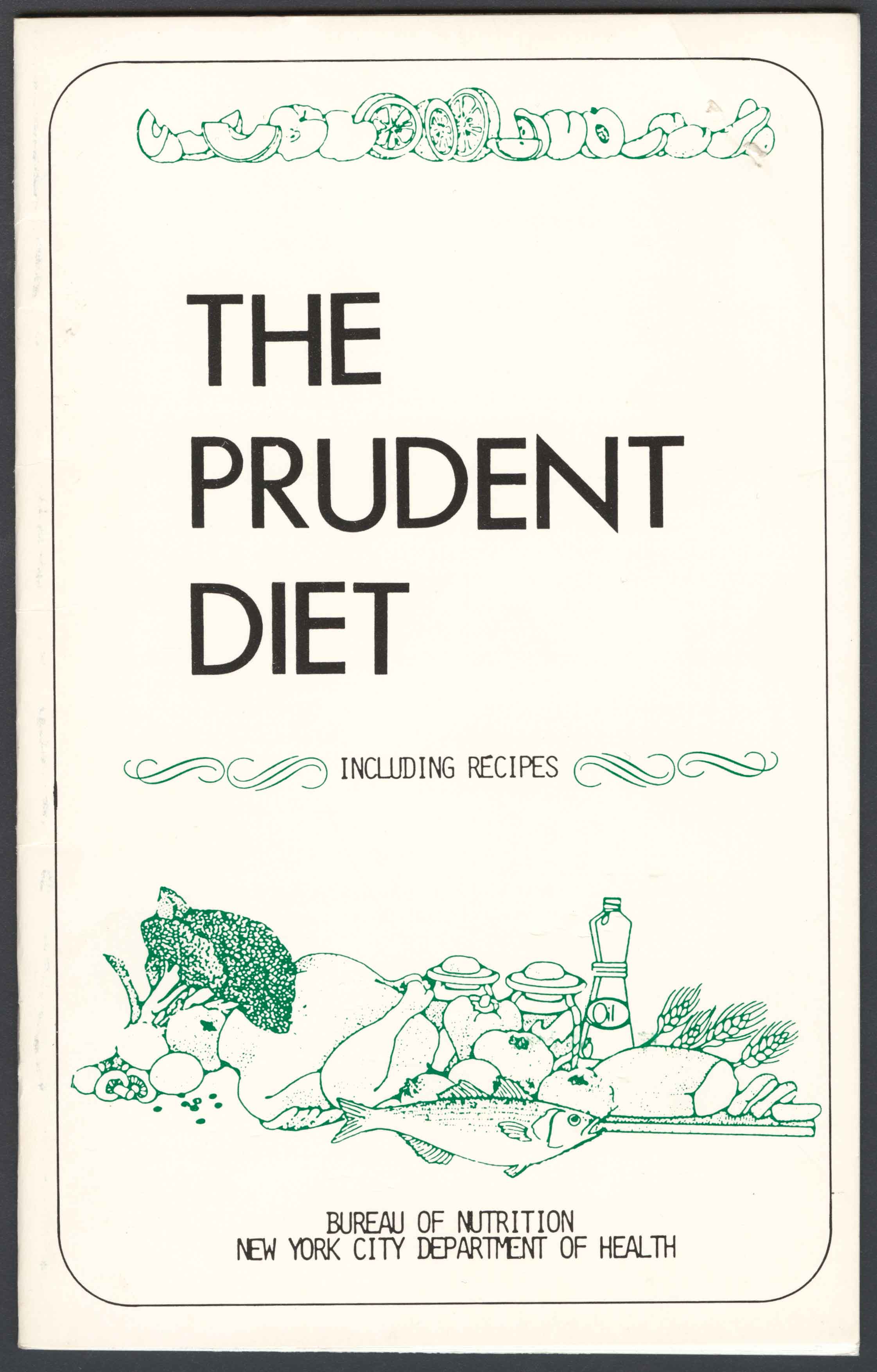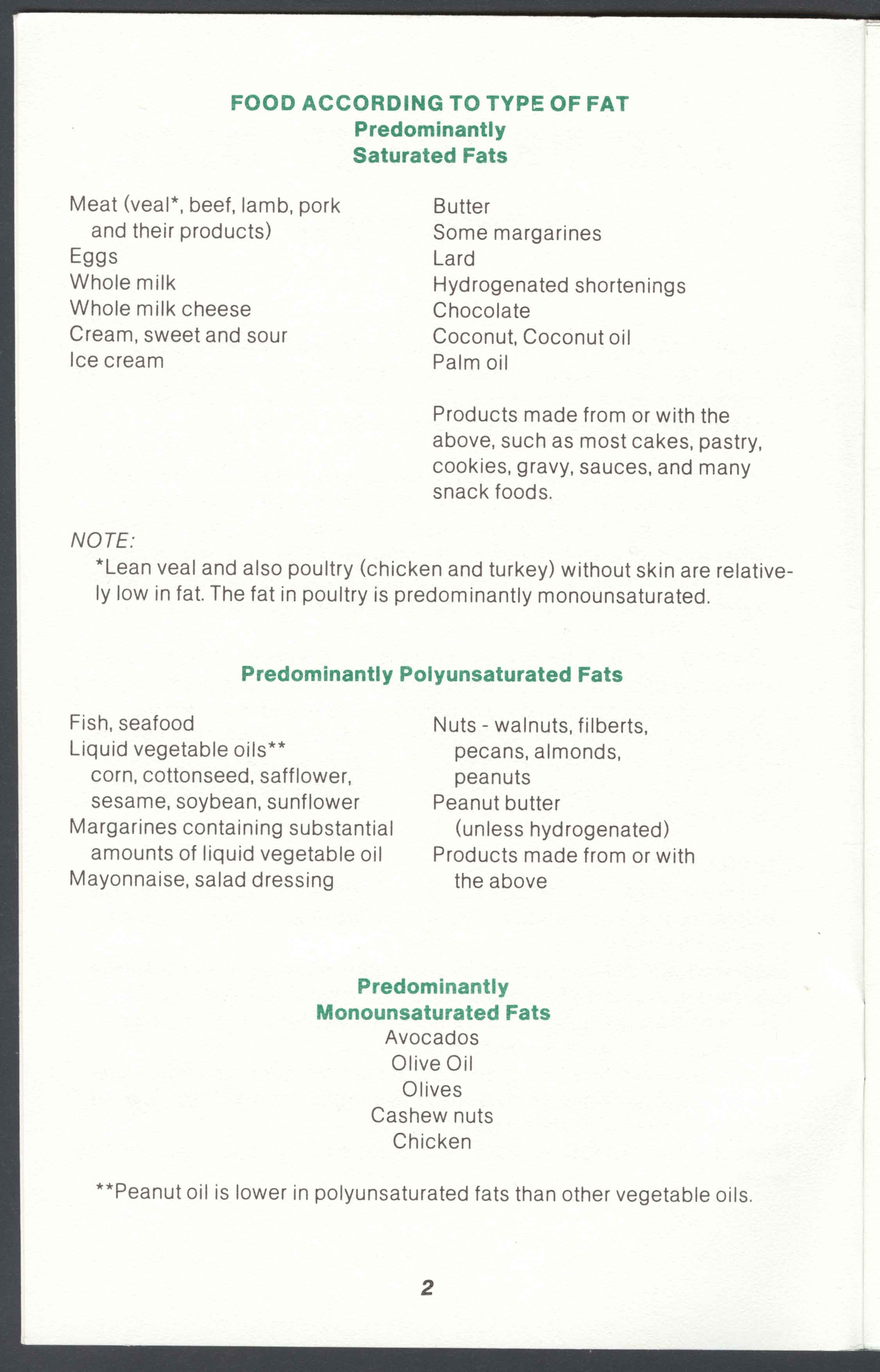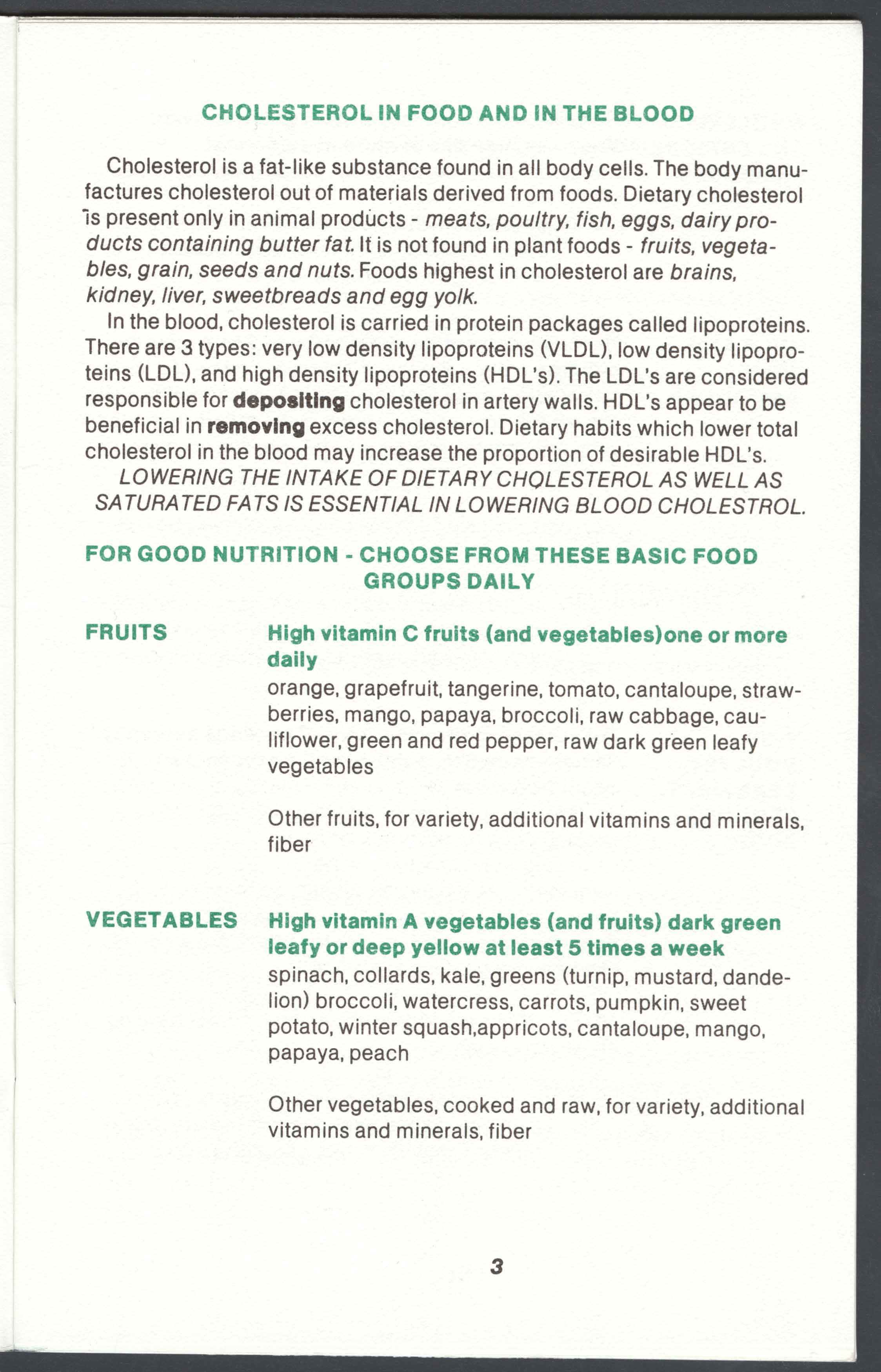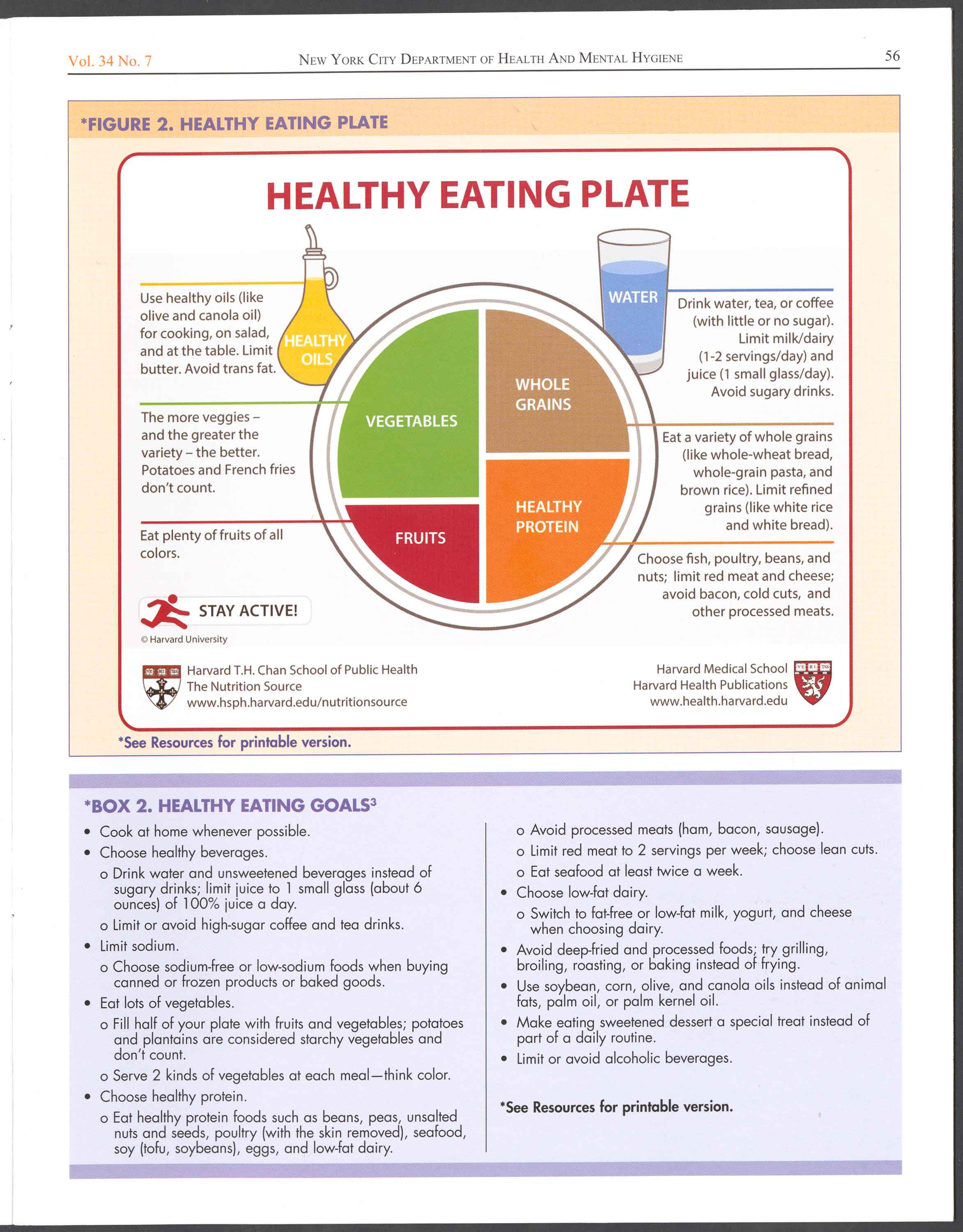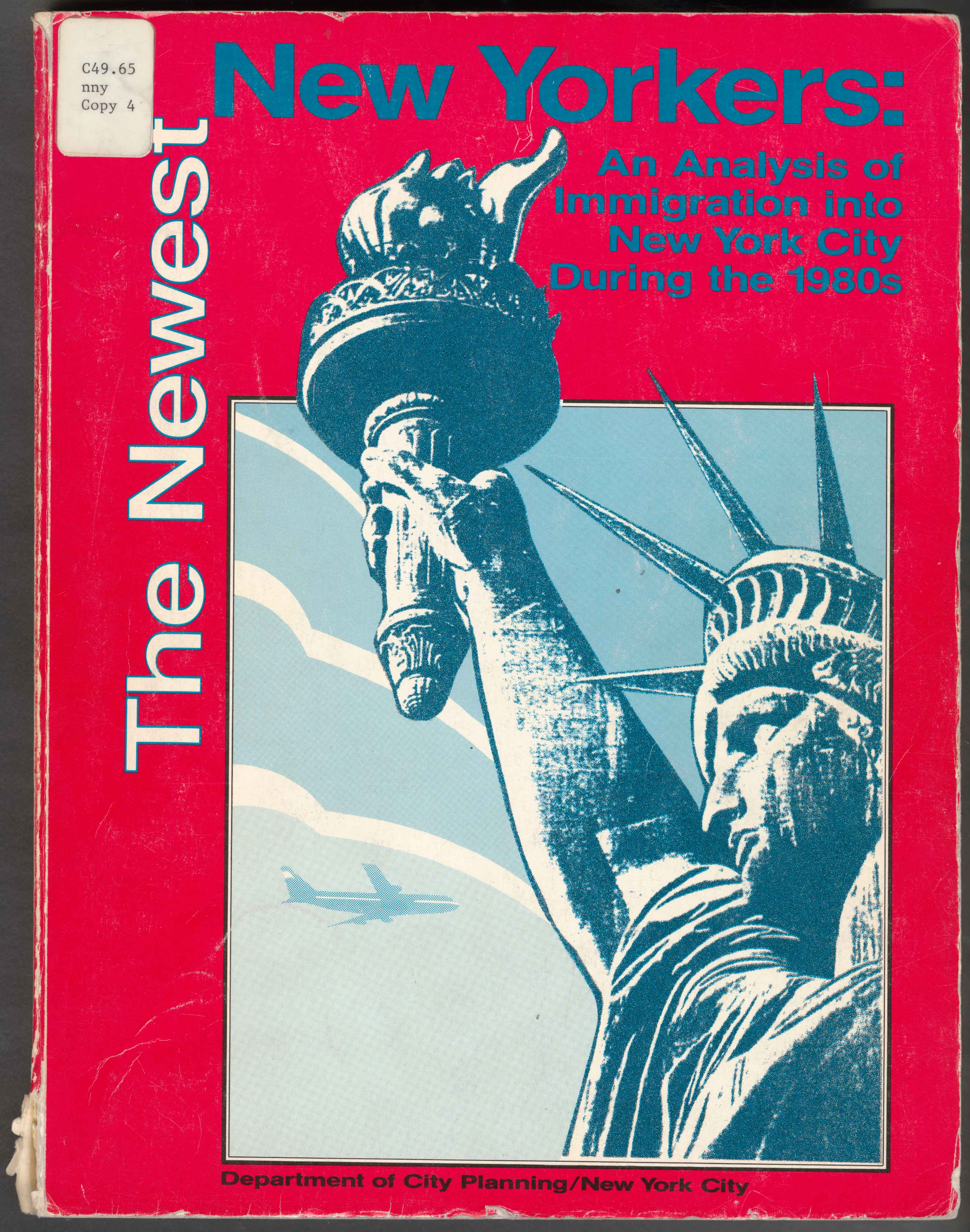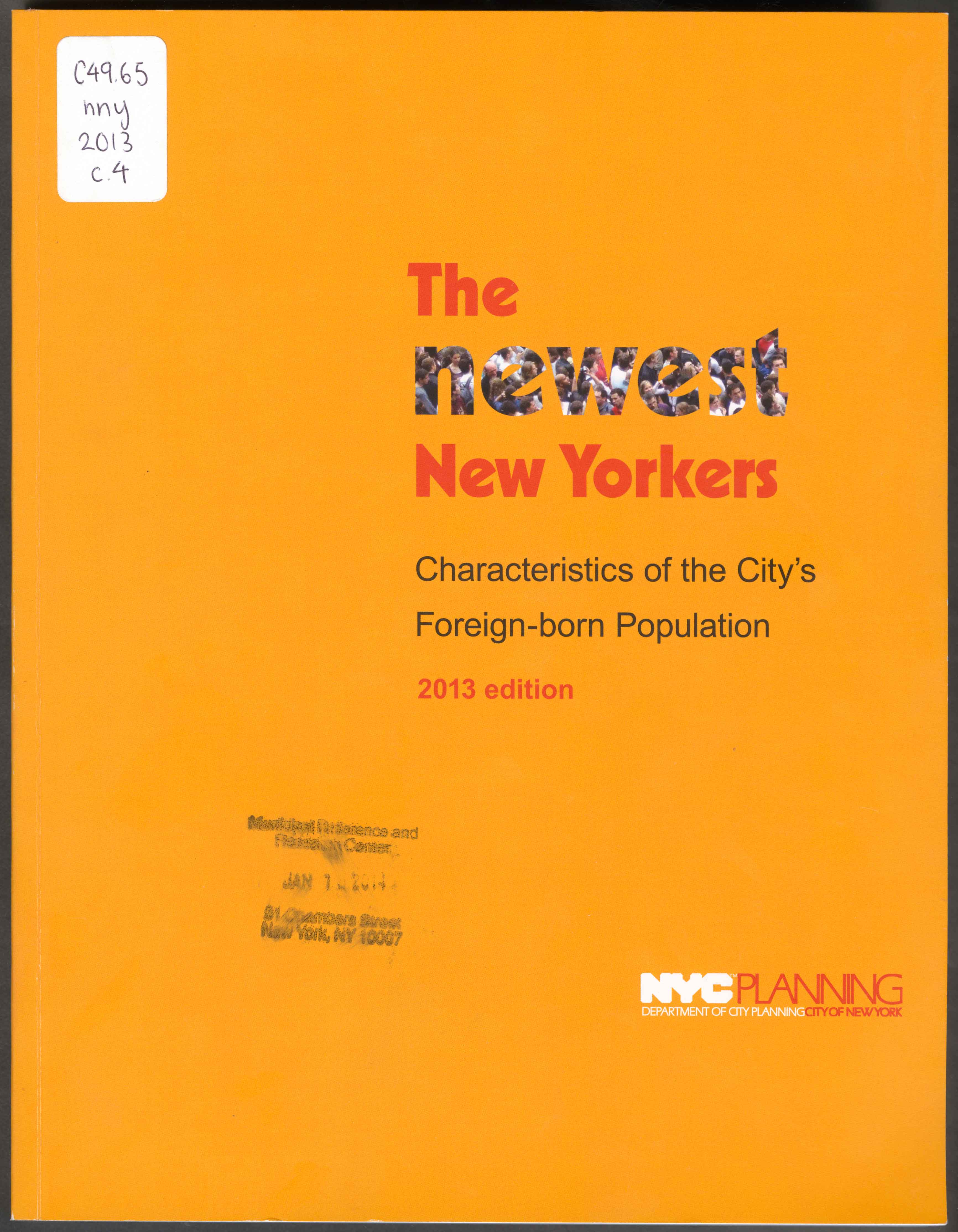|
|
SPOTLIGHT ON:
|
|||||||
By Christine Bruzzese, Supervising Librarian, Municipal Library |
|||||||
|
Healthy diet and proper nutrition are not just current concepts and concerns. Depicted here is a Keep Well Leaflet from the New York City Department of Health published circa 1920. The title is: "Simple Wholesome Lunches for Working People." Take a look at recommended lunches for the worker with a more sedentary job and one with a physically-taxing occupation.
"The Prudent Diet" from Bureau of Nutrition, Department of Health, was published in 1941. It warns of the dangers of a high-fat diet and elevated blood cholesterol. Featured is some advice on fats and cholesterol in various food groups.
More current advice from 2015 is included in the City Health information publication "Helping Patients Make Healthy Eating Choices." The illustration here shows examples of healthy foods and dietary goals. Compare and contrast to the earlier years for perspective.
|
The Newest New Yorkers |
||
By Christine Bruzzese, Supervising Librarian, Municipal Library |
||
|
Beginning with the 1980 census, the New York City Department of City Planning began publishing "The Newest New Yorkers." Each subsequent edition has been prepared and published a few years after the federal census done every ten years. The report provides comprehensive statistics and analysis on the immigrant population and its impact on New York City. Featured below are the covers of the earliest (1992) and the most recent report (2013)
|
For the Record: Department of Public Welfare of the City of New York |
By Michael Lorenzini |
|
The vertical files in the Municipal Library contain a treasure trove of newspaper clippings, media releases and documents from City agencies. There also are original analyses written by the legendary Rebecca Rankin, the long-time Municipal Librarian and her staff. Written on onion-skin paper, the articles are distinctive and elicit a jolt of anticipation when located. For the June 7th edition of "For the Record," the Blog of the NYC Department of Records and Information Services, we published a history of public welfare in the City, written by Ms. Rankin and staff circa 1922. Read the full article on our blog. |
The Challenge of Electronic Records Management |
By Fred Baptiste, Director of Municipal Records Management |
|
The City of New York is making a deliberate move towards electronic records management. There are numerous benefits to this including reduced warehouse storage costs, more efficiency, and improved search and findability capabilities. But to achieve these things, there are a number of challenges that we will have to meet. Finding the 'silos' The primary goal in the electronic records management plan is to get a grasp of the all the information and records repositories that we have as a city. Part of the difficulty in this is that because of the complexity of how some agencies are structured there may be 'silos' - data or records that exist in the organization, but may be only known and used by a few and may not be managed in a manner consistent with agency and citywide standards. Part of the work is finding out 'what we don't know'. "Making Sure that the tools address all the needs" Technology is wonderful if used properly. We can automate processes and do more work faster. However, we need the tools to address not only the business cases but to also consider other factors including records lifecycle, preservation holds, and scalability. Repositories and platforms that don't allow us to purge records after they have passed their retention; apply and release preservation holds; or export materials to archival platforms potentially create other issues with regard to records retention. The technologies we choose should be robust enough to answer our current needs but flexible enough to allow for growth. Working "In the Flow" Michael Idinopulos, in his blog post entitled "In-the-Flow and Above-the-Flow", discusses the challenges of adoption of wikis and points out an interesting phenomenon. When work activities are "above the flow" that means that worker has to stop what they are doing in order perform some other task. Whereas with "in the flow" activities, workers do not need to necessary stop doing their work - the activity is already built in to the work process. So as we move towards electronic records management, we want to try and integrate the record keeping activities to the greatest extent possible into normal workflows. |
Emergin Technologies - What you need to know |
By Praveen Panchal, CIO |
|
It is quite likely that you might have heard or read buzzwords like Artificial Intelligence, Mixed Reality - Virtual and Augmented Reality, Internet of Things (IoT) and Blockchain. These emerging technologies are changing the world, as we know it. However, what many people do not realize-or at least do not ponder about-is how these technologies are influencing us in our daily life. In this brief article, I will provide a general overview of these technologies. Artificial Intelligence (AI) - The dictionary definition of AI is the theory and development of computer systems able to perform tasks that normally require human intelligence, such as visual perception, speech recognition, decision-making, and translation between languages. Some real life examples are - Self-driving and Parking Vehicles, Digital Assistants (Amazon Alexa, Apple Siri, Microsoft Cortana and Google Home), Vehicle Recognition Identification - Traffic Cameras, Robots - iRobot Roomba and Transportation (Uber, Lyft, etc.). Mixed Reality (Virtual and Augmented Reality) - Virtual and augmented realities bring elements of the virtual world into the real world, producing new environments and visualizations where physical and digital objects co-exist and interact in real time thus enhancing our experience of what we feel, see and hear. Real life examples include flight simulation, pilot assistance, work place training, architecture and interior home design, gaming, treating fear of flying, virtual museum visits, virtual field trips and interactive educational content, etc. Internet of Things (IoT) - IoT is the interconnection of devices embedded in everyday objects via the Internet thus enabling them to send and receive actionable data. It means connecting any device with a sensor or an on and off switch to the Internet or to each other. This includes everything from coffee makers, thermostats, washing machines, lawnmowers, cellphones, headphones, lamps, wearable devices and almost anything else one can think of. It also applies to components of large equipment; for example an engine of a car or the imaging hardware of an MRI machine in a doctor's office. Some real life examples are as follows: If the traffic is heavy, your car might find another route, and send a text message to your office, notifying them that you might be running late. Your mobile phone's alarm clock wakes up you at 7 a.m. and simultaneously sends a signal to your coffee maker to start brewing. When your printer is running low on supplies it will automatically re-order them and similarly, when your refrigerator knows that you are running low on milk, it will notify you so that you can pick it up while returning from work. Blockchain - Blockchain is the digital, distributed, and decentralized ledger responsible for logging all transactions without the need for any intermediary, such as government or a bank. It is technically a shared way of authenticating and distributing transactions and verifying that an action or a transaction has taken place. In general, Blockchain is associated with the Cryptocurrency but it could be a vote, exchange of information, a document or a product. From a consumer perspective, it can provide peace of mind through enhanced security and verification, utilizing distributed network of machines run independently by people. Some real life examples are as follows:
|
|

